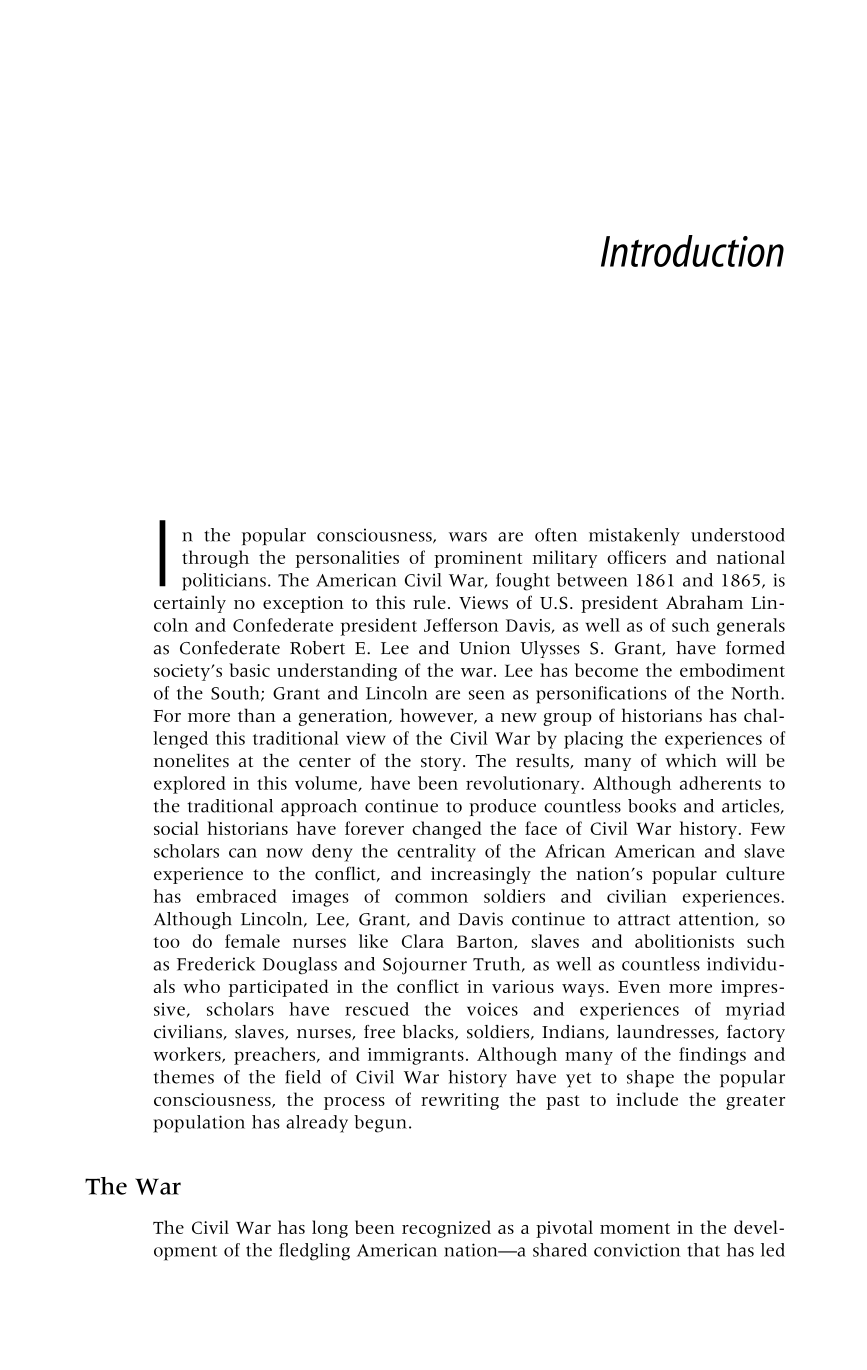Introduction
I
n the popular consciousness, wars are often mistakenly understood
through the personalities of prominent military officers and national
politicians. The American Civil War, fought between 1861 and 1865, is
certainly no exception to this rule. Views of U.S. president Abraham Lin-
coln and Confederate president Jefferson Davis, as well as of such generals
as Confederate Robert E. Lee and Union Ulysses S. Grant, have formed
society’s basic understanding of the war. Lee has become the embodiment
of the South; Grant and Lincoln are seen as personifications of the North.
For more than a generation, however, a new group of historians has chal-
lenged this traditional view of the Civil War by placing the experiences of
nonelites at the center of the story. The results, many of which will be
explored in this volume, have been revolutionary. Although adherents to
the traditional approach continue to produce countless books and articles,
social historians have forever changed the face of Civil War history. Few
scholars can now deny the centrality of the African American and slave
experience to the conflict, and increasingly the nation’s popular culture
has embraced images of common soldiers and civilian experiences.
Although Lincoln, Lee, Grant, and Davis continue to attract attention, so
too do female nurses like Clara Barton, slaves and abolitionists such
as Frederick Douglass and Sojourner Truth, as well as countless individu-
als who participated in the conflict in various ways. Even more impres-
sive, scholars have rescued the voices and experiences of myriad
civilians, slaves, nurses, free blacks, soldiers, Indians, laundresses, factory
workers, preachers, and immigrants. Although many of the findings and
themes of the field of Civil War history have yet to shape the popular
consciousness, the process of rewriting the past to include the greater
population has already begun.
The War
The Civil War has long been recognized as a pivotal moment in the devel-
opment of the fledgling American nation—a shared conviction that has led




















































































































































































































































































